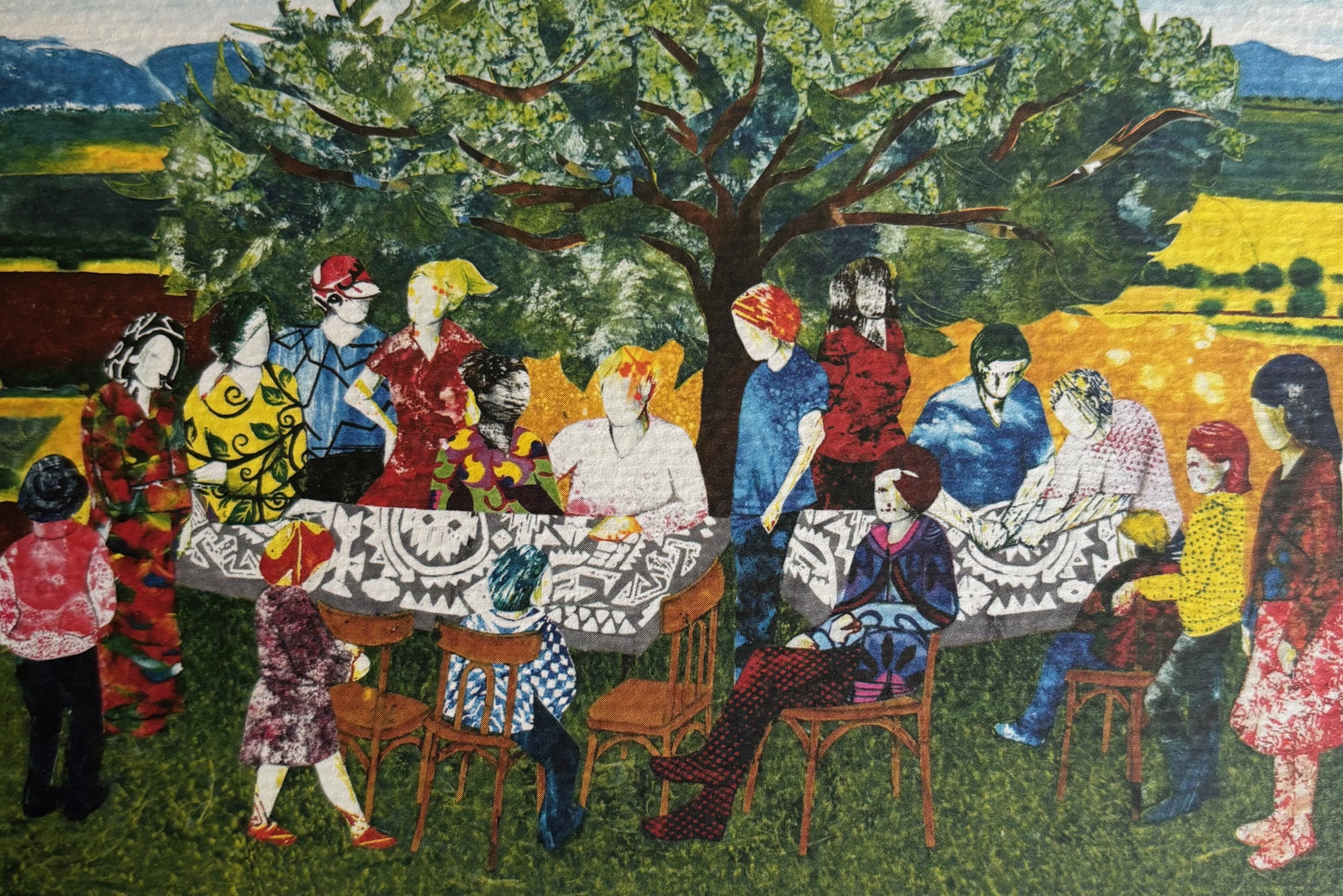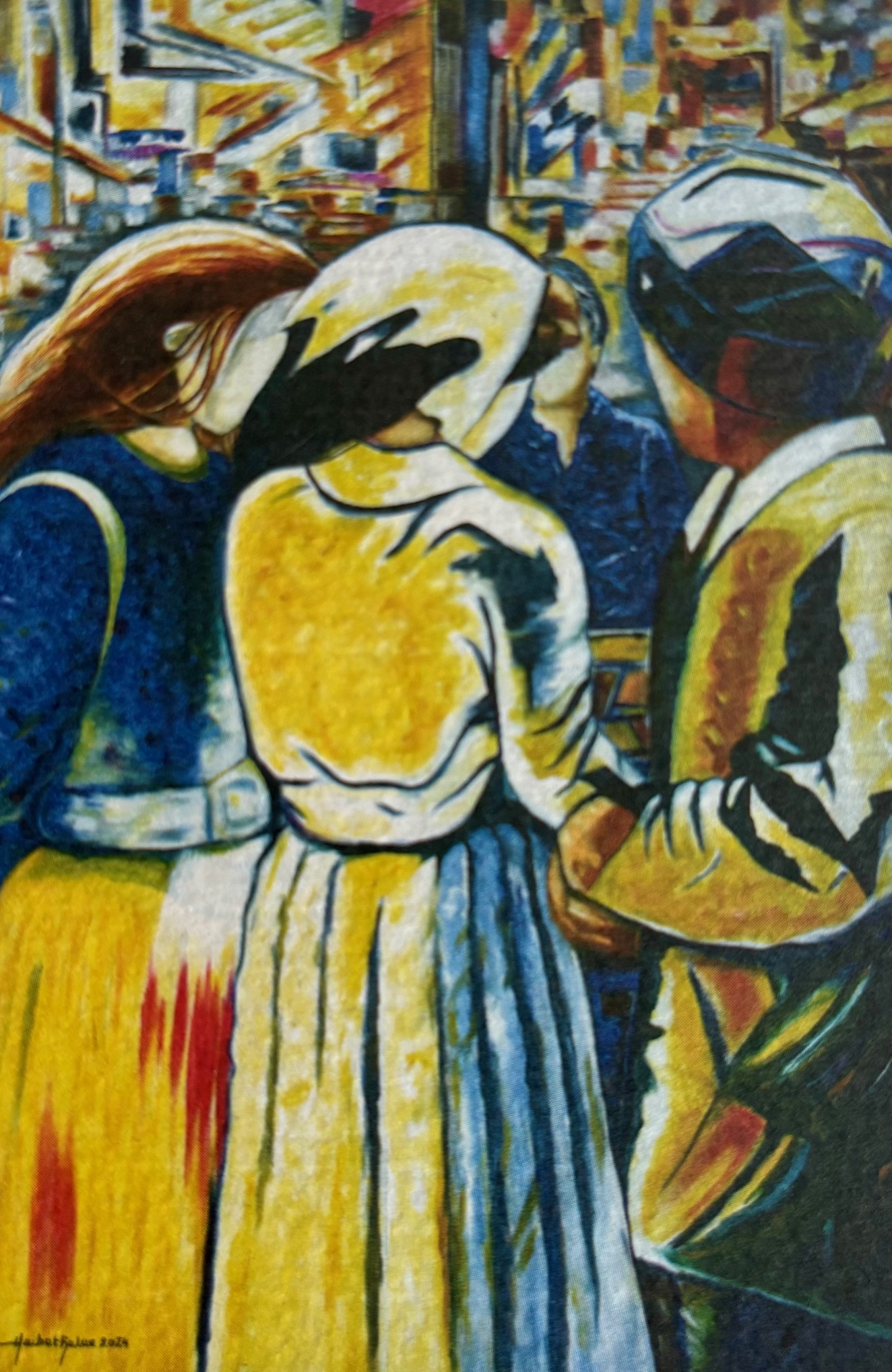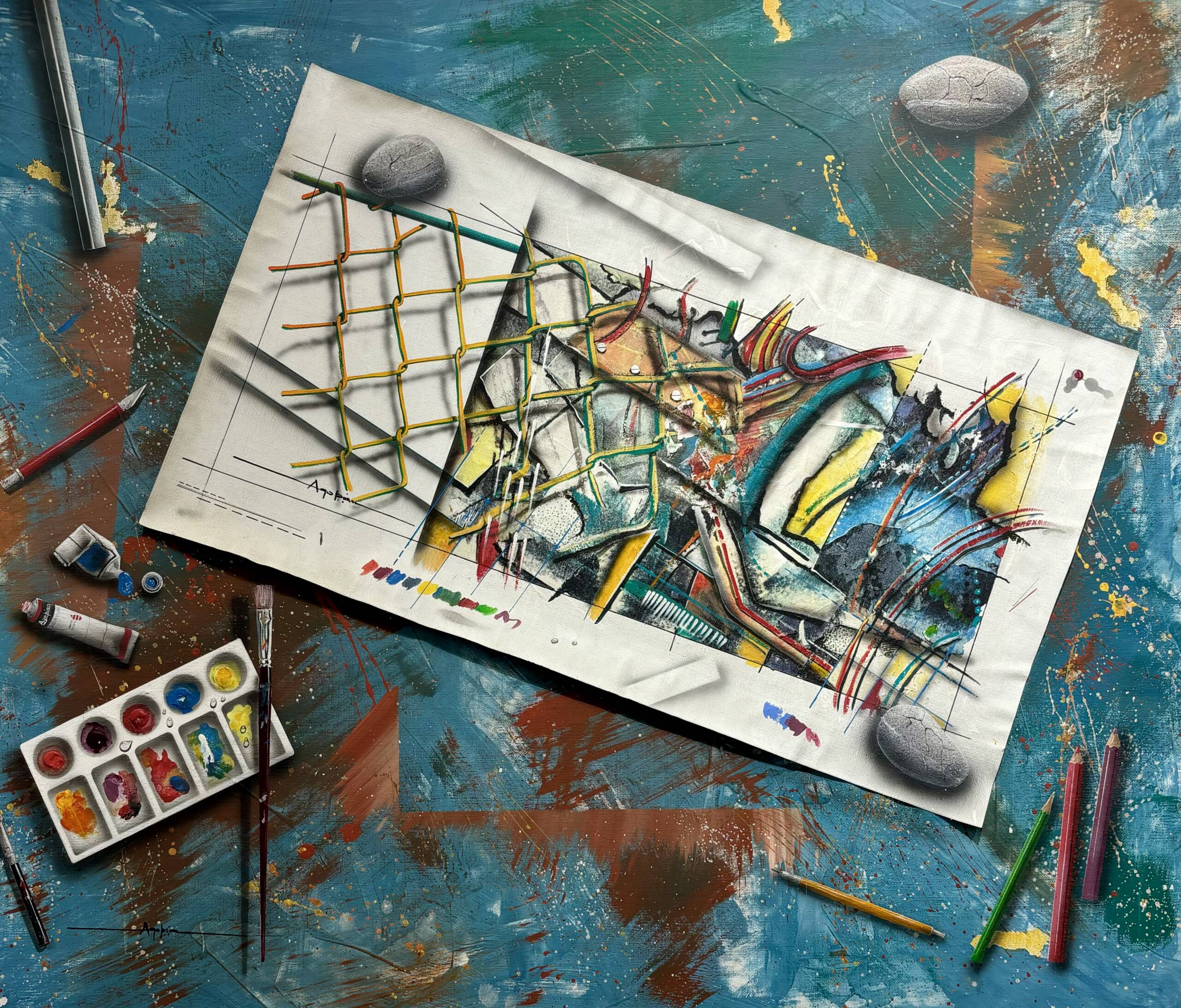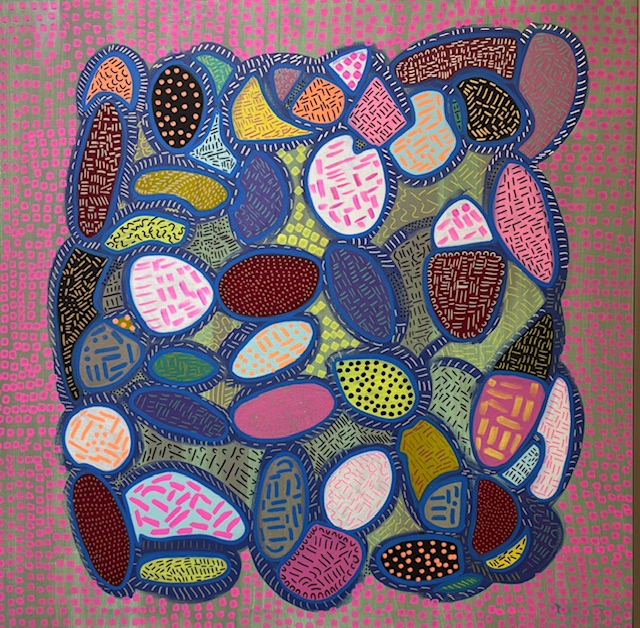An article by F. G. (750 words, 4 min. read)
Art on 56th Gallery in Beirut hosted Timeless Traditions, a solo exhibition by renowned Lebanese artist Haibat Balaa Bawab. Known for her delicate and emotionally charged collages, Bawab presented a deeply personal collection that intertwined memory, heritage, and the evolving realities of Lebanon.
This exhibition marked a significant development in Bawab’s artistic process. While collage has always been central to her practice, Timeless Traditions emphasized her growing dedication to her art. Rather than relying on found clippings, she meticulously prepared her own papers, treating them with various media—oil, acrylic, gouache, and ink—before incorporating them into her compositions. “This deliberate and thoughtful preparation allows me to fully immerse myself in the process, carefully choosing the media, techniques, and textures to convey my visions,” she explained. The result was a series of mixed media collages on both cardboard and canvas, where texture, form, and color converged to create evocative narratives.
Art as Survival and Resistance
Created over the span of two years, this body of work emerged from a period of turbulence and uncertainty. Against the backdrop of war and instability, Bawab found solace in her studio, transforming it into a refuge from the outside world. “The process of creation became an act of survival and resistance, channeling my fears and emotions into the work,” she reflected. This emotional intensity is evident in the abstraction of her recent pieces, which display a more layered, fragmented, and expressive visual language compared to her earlier works.
Despite the turmoil, her collages remain deeply rooted in Lebanon’s landscapes and cultural fabric. The vibrant colors, organic forms, and recurring imagery of Beirut and its surrounding mountains stand in contrast to the destruction beyond her atelier walls. This juxtaposition—between chaos and serenity, loss and resilience—imbues the exhibition with a profound emotional depth.

A Dialogue Between Memory and Place
Maie El Hage, an art historian who has closely followed Bawab’s career, describes Timeless Traditions as “a poignant meditation on the fragility of memory and the endurance of culture. Haibat Balaa Bawab’s work captures the pulse of Beirut—its beauty, its pain, and its unyielding spirit. Through her intricate layering of materials and textures, she creates a visual language that speaks to both personal and collective experiences.”
This dialogue between individual memory and collective identity is particularly evident in key works from the exhibition. One striking piece depicts a group of faceless figures In the middle of a lush landscape. The facelessness invites viewers to step into the scene, transforming the artwork into a shared reflection on belonging and displacement.
Another powerful composition portrays two men locked in a symbolic duel, surrounded by a flurry of birds. Set against a dramatic magenta backdrop, the scene is charged with tension. The birds, rendered in vivid yellows and greens, symbolize both freedom and fragility, while shadowy hands reach in from the periphery, suggesting unseen forces shaping the struggle. This piece resonates deeply within Lebanon’s current socio-political climate, reflecting both internal conflicts and external pressures.
Bawab’s use of diverse techniques—including calligraphy, etching, and silkscreen—further enhances the tactile and symbolic richness of her work. Each layer of paper, each stroke of paint, becomes a fragment of Lebanon’s past, present, and future, intertwining personal narratives with broader historical currents.
The meticulous work of Bawab elevates collage to a higher level that cannot but capture the eye of the beholder.
Collector
A Testament to Resilience
More than just an exhibition, Timeless Traditions stands as a testament to Bawab’s enduring artistic vision and her ability to translate the weight of history into contemporary expression. By balancing abstraction with deeply personal iconography, she captures the essence of Lebanon; not only as a physical space but as a living, evolving memory.
As Maie El Hage notes, “Bawab’s work is a reminder that art is both an archive and an act of resistance. In her collages, destruction coexists with hope, and loss is counterbalanced by the vibrancy of life. She does not just depict Lebanon—she preserves its soul.”
Through Timeless Traditions, Haibat Balaa Bawab reaffirms that art is more than a means of documentation; it is a language of endurance, a vessel for cultural preservation, and a beacon of hope in times of uncertainty. With each meticulously crafted collage, she offers a vision of resilience, one that honors Lebanon’s past while carving a space for its future.



